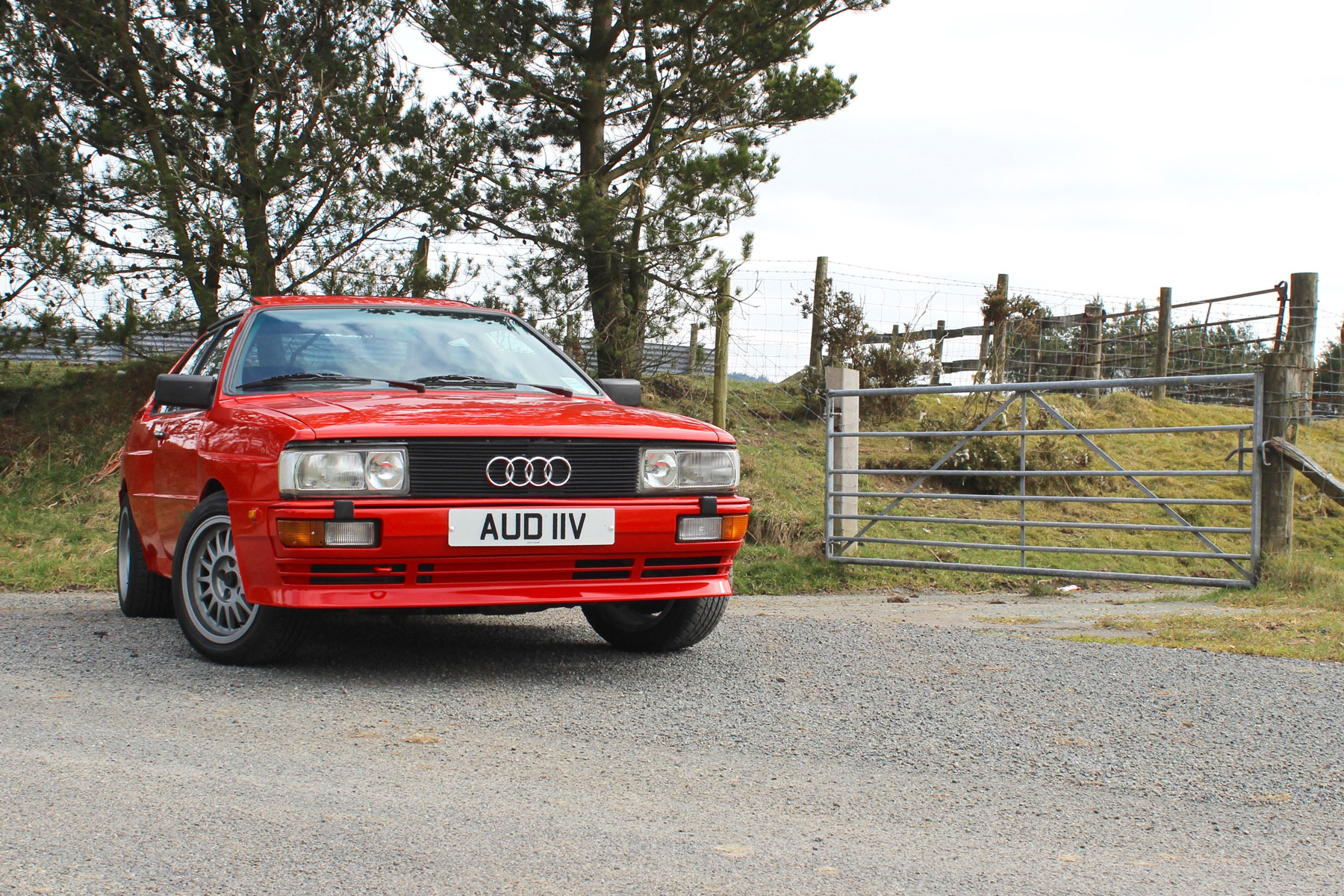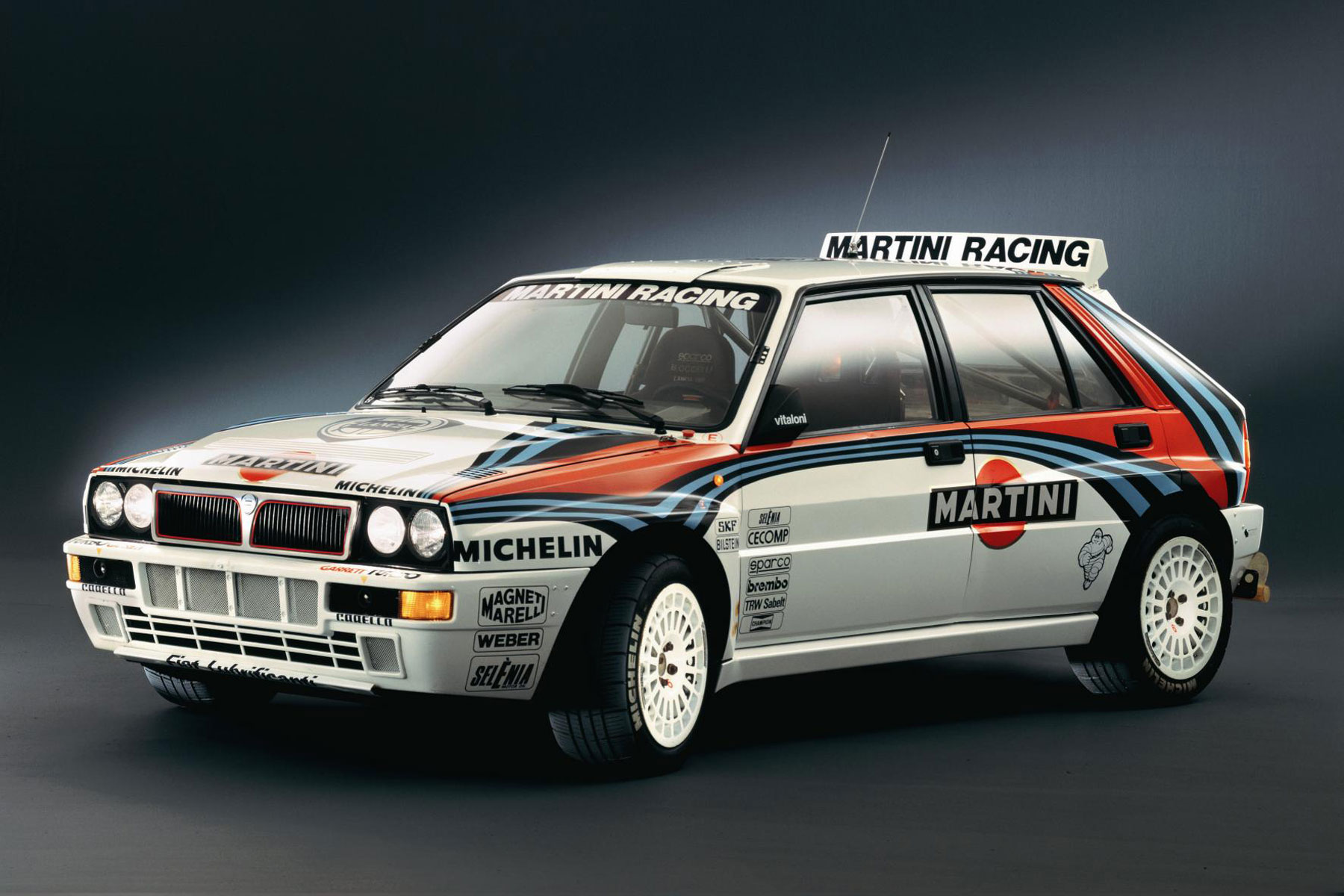I was eight years old when the original Audi Quattro first rolled out of a showroom – a mere slip of a lad, gazing at the world from the back of my father’s 1975 Citroen GS. To me, the Quattro was otherworldly, a vision of the future that somehow sat far beyond the rest of the Audi range.
This four-wheel-drive performance car didn’t come cheap. In 1983, any wannabe Walter Röhrl or Hannu Mikkola was asked to part with more than £17,000 for the privilege of driving Audi’s rally car for the road. For context, that was more than twice the price of the Audi Coupe GT, about £7,000 more than a Saab 99 Turbo and £3,000 more than a Porsche 944 Lux.

Yet this trailblazer had it all: turbocharging when it was still a novelty, four-wheel drive when it was still associated purely with military and agricultural vehicles, and a rally pedigree to beat all others.
Fast-forward more than three decades and I finally got my chance to drive one, courtesy of Great Escape Cars in Redditch.
What are its rivals?

This depends on when you ask the question. Back in the early 1980s, the Quattro’s performance earned it the right to be considered alongside the likes of the Porsche 944 Turbo and Lotus Esprit. Judged as a family car, it was almost without peers.
Today, the ur-Quattro (‘ur is German for ‘original’) is ranked alongside the E30 BMW M3 and Lancia Delta Integrale among performance legends of the decade, as well as the greatest performance cars of all time. In short, the Quattro sits among the automotive elite.
What engine does it use?
Audi’s famous five-cylinder engine made its debut in the Audi 100 of 1976. The 2,144cc unit found in the Quattro was a 200hp version of the turbocharged engine that powered the Audi 200 luxury car.
Audi added an intercooler to provide the additional oomph, delivering a top speed of 137mph and 0-60mph in 7.1 seconds. Quick enough, but the real revelation was the traction and grip offered by the Quattro four-wheel-drive system.
What’s it like to drive?

I don’t mind admitting I had butterflies in my stomach as I sauntered up to the icon, ignition key in hand. What if it didn’t match the dreams of my youth? What if Old Father Time had rendered this legend of yesteryear obsolete and out of touch? Insert a cliche about meeting your heroes…
Not only that, I’d be driving the icon in Wales – the ideal playground for a car with such a deep-rooted rally pedigree. I needn’t have worried. Twist the key (no start button nonsense here) and the straight-five stirs into life like a dragon waking from its slumber. It’s one of the most evocative soundtracks in the world and it’s central to the Quattro experience.
The idle is erratic, encouraging you to blip the throttle before take-off. Once free of 30mph zones and the many sheep, the Mars Red Quattro begins to show its true colours. The turbo lag is the stuff of legend and it’s there in abundance. Floor the throttle and… wait for it… the Quattro shoots for the horizon at an alarming rate.

The steering wheel, refreshingly free of buttons but blessed with a very 1980s ‘turbo’ badge, is surprisingly communicative, while the tall tyre sidewalls give the impression of being perched high above the road. This is no low-slung sports car, but you soon learn how best to approach it.
The key is to hit the brakes before the entry to a corner, maintaining engine speed through the bend, before hitting the gas to power out the other side. It’s an intoxicating experience, with the slightly ‘woolly’ gear change (this car had done 174,000 miles) simply adding to the sense of involvement. The Quattro will run wide if you overdo it, but lift off and it falls back into line.
It’s not perfect. After so many miles, the manual shift is less than precise, while the brakes take a bit of getting used to. But it all adds to a timeless experience. A smoothed-out version of the Quattro would be less memorable.
Reliability and running costs

The ur-Quattro won’t be a cheap car to run. Assuming you can live with the fuel economy, which is likely to be around 20-25mpg, there are the small matters of parts availability and cost of servicing to consider.
If well maintained, these cars are capable of covering mega miles, but keeping one in perfect running order won’t be easy. A cheap Quattro is probably cheap for a reason.
Could I drive it every day?

On the other hand, this is definitely a car you could live with every day. It’s surprisingly easy to drive, even around town, while the narrow pillars and expanse of glass provide good all-round visibility. There’s also plenty of room in the cabin, although don’t be fooled by the car’s hatchback shape; the boot is surprisingly small.
If you do decide to drive your Audi Quattro every day, we applaud you. Just be prepared for countless admiring glances and the occasional thumbs up from pedestrians. Gene Hunt and the Ashes to Ashes TV series have a lot to answer for.
How much should I pay?

The simple answer is: as much as you can afford, and then some. Around £3,000 gets you a Quattro in need of a rebuild, while you’ll be forced to part with well over £30,000 for a late and ultra-desirable 20-valve.
That said, you could end up paying much, much more. Cars with provenance and concours-winning potential command fees beyond the £50,000 mark.
What should I look out for?

In a word: rust. Some of these cars are now 40 years old, so corrosion may have taken hold. If the body has been repaired, make sure the work was completed by a reputable company. Also, beware of resprays that might hide a multitude of sins.
You’ll also notice that the interior isn’t screwed together in quite the same way as modern Audis. This isn’t meant to be a criticism, simply a warning that you might need to replace certain parts. If in doubt, take a specialist with you when viewing the car.
Should I buy one?

Of course you should. This is a true legend of road and track, so you’re unlikely to lose any money if you buy a good one. Given the prices being asked for certain fast Fords and a particular hot Peugeot, we reckon the Quattro is decent value.
After all, this is a car that changed the fortunes of an entire company and revolutionised world rallying. On second thoughts, we think it’s a bit of a bargain.
Pub fact

The ur-Quattro was the first 4×4 road car to be sold in Europe since the Jensen FF of the late 1960s. Other 4x4s of the time were all SUVs such as the Range Rover, although the Subaru Leone and AMC Eagle bridged the gap between smooth and rough roads.
The Quattro itself can trace its roots back to a primitive 4×4 system that was used in the Volkswagen Iltis military vehicle.
ALSO READ:
Meet the electric tribute to the Audi Quattro



[…] Bavarian-based Elegend wants to build 30 examples of the EL1, which resembles a neo-futuristic version of an Audi Sport Quattro. […]
[…] properly cared for, it will last a lifetime. The 1983 Audi Quattro is capable of going many miles without needing major repairs. It is not easy to find parts and can cost a lot of money for essential maintenance. But it's an […]
[…] four-wheel-drive vehicle isn’t a viable alternative to a set of winter tyres. While it will provide better traction on ice […]
[…] said: ‘Fast Audis, including the Quattro, long had a reputation for feeling aloof, but the RS3 is alert and utterly planted. Its supple […]
[…] IMSA GT Championship, the Audi 90 Quattro GTO brought sonorous five-cylinder turbocharged power and all-wheel drive to circuits across the US and […]